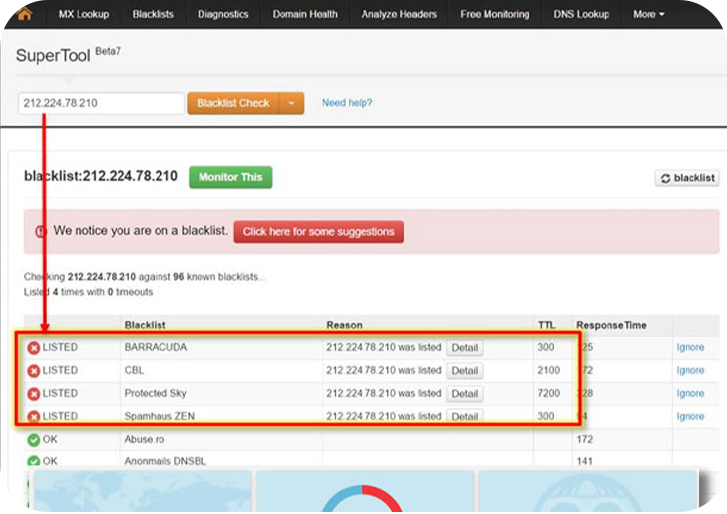We will explore the backend of the internet and gain a deep understanding of how email processes work. We will also explore how top service providers like Gmail, Yahoo, Outlook, and others efficiently manage the billions of daily email sends. While many people have a basic grasp of the email process, it's essential to recognize its complexity.
Are you familiar with SPF, DKIM, DMARC, deliverability, Barracuda, Spamhaus, reverse DNS, IP warming, block bounce, hard bounce, feedback loop, and more?
Email scams and spoofing are among the most significant threats.
These components are critical - if not configured correctly, your emails may be in the spam folder. Similar to a credit score for your internet reputation, your Sender Score is recalculated with each email deployment linked to your sender domain/IP. Smaller volume senders using a general plan, like Mailchimp, have their email deployments monitored by the ESP. At the same time, larger organizations are responsible for managing their own due to the higher volume they send.
Spam accounts for 45% of all emails sent. Spam earns Senders around $7000 per day and costs businesses a whopping $20.5 Billion annually.
Control and compliance
Several protocols, such as IMAP, SMTP, MTA, and countless other security features, require a verified sending infrastructure. The sending infrastructure is under scrutiny more now than ever because the reality is that you have to earn your email delivery with every email sent. Just like credit, do something out of the ordinary today, and there is an impact on your credit score that determines your approval rating, rates, and so on. In email, a negative impact can be that your emails may be held in quarantine until you satisfy the ISP with your other email sends.
If your emails hit too many spam traps or other anti-spam measures, internet service providers (ISPs) may block all of your email sends. This is known as "block bouncing" in the digital marketing industry. It happens when your sending domain and IP address get blacklisted by ISPs and global spam databases that ISPs use. The problem with block bouncing is that you usually won't know you're being blocked. ISPs don't warn you, so you'll only notice when your email open rates plummet close to zero, because all the emails you're sending are being immediately rejected without even reaching the recipient. This means the recipient never even knows you sent an email.
What is a spam trap or honey pot?
These are special email addresses that were once owned by real people, but were deactivated by the internet service provider (ISP) and are now used to monitor companies' email campaigns. ISPs use these addresses to check if companies are complying with the CAN-SPAM regulations and policies. ISPs do not like it when emails are sent to people who are not interested in receiving them, as it can be seen as spam. According to ISPs, someone is considered "uninterested" even if they initially signed up for your emails but then stopped engaging with them. Sending numerous emails to people who never open them is like quietly quitting, and this is not recommended.

What’s next?
It's crucial to maintain an excellent email sender reputation to ensure that your emails not only reach the intended inbox but also avoid the spam folder, which is rarely checked.
There are several basic steps that you should always follow to ensure that using services like Gmail or Yahoo will not negatively impact your campaigns.
- Absolutely vital: Verify that your email list is pristine! This entails confirming that your subscribers have willingly opted in and are eager to receive your emails. Never include individuals from a purchased list or enroll them in a campaign they did not explicitly request to join.
- Remember, content is king. It's essential to tailor your content to your audience's interests. If your emails go unread and pile up, services like Gmail may categorize them as a nuisance and treat them accordingly..
- Investing in high-quality email templates is crucial. Free templates are often outdated and basic, which may impact your email delivery. Email services have strict rules to ensure reputable companies invest in well-crafted emails. It's essential to prioritize quality templates for better subscriber engagement.

